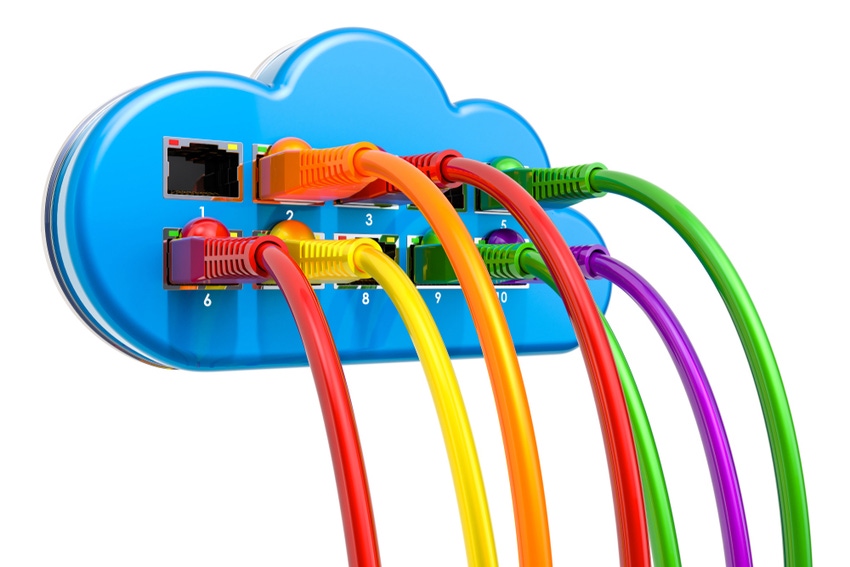Earlier this week, at VMworld Europe, VMware unveiled Cloud Director Service on AWS, a SaaS version of VMware vCloud Director

Managed service providers delivering cloud now have a way to reach midmarket enterprises through VMware on Amazon Web Services.
Typically, VMware has targeted large organizations with its cloud platform. But earlier this week, at VMworld Europe, VMware unveiled Cloud Director Service on AWS, a SaaS version of VMware vCloud Director. Now, for the first time, the cloud computing company will support multitenancy.

VMWare’s Rajeev Bhardwaj
“You subdivide instances into multiple segments on multiple clouds, and have multiple customers share that cloud,” Rajeev Bhardwaj, vice president, products, cloud provider software business unit, at VMware, told Channel Futures.
This opens new opportunities for channel partners who may have wanted to offer VMware Cloud capabilities to smaller customers but for whom the company’s services were unaffordable. Cloud Director on AWS changes that, providing “better economics,” Bhardwaj said.
VMware is launching Cloud Director on AWS but will expand to other providers as well; it already has partnerships with Microsoft Azure, Google Cloud Platform and Oracle Cloud that will pave the way for similar multitenant solutions on those platforms.
Overall, the new platform further supports end users’ multicloud strategies. Indeed, in a recent study conducted for Cisco, IDC Research found that 88% of companies use two or more cloud providers, with the average totaling 16. Gartner reported much the same earlier this year. The research firm surveyed public cloud users, 81% of whom said they work with two or more vendors. According to Gartner, reasons include dominance of public cloud megavendors and inability for just one to reach across all geographies in which an enterprise may operate.

Gartner’s Michael Warrilow
“Most organizations adopt a multicloud strategy out of a desire to avoid vendor lock-in or to take advantage of best-of-breed solutions,” said Michael Warrilow, vice president analyst at Gartner. “We expect that most large organizations will continue to willfully pursue this approach.”
VMware’s Bhardwaj agreed.
“More customers are going multicloud because no one size fits all,” he said.
At the same time, however, the multicloud approach “creates complexity because each one has its own model,” Bhardwaj noted. And that, he added, bodes well for partners.
“We believe complexity is an opportunity for our cloud providers to help customers navigate the journey.”
To be sure, VMware Cloud Director Service on AWS aims to reduce some of that complexity. For starters, it requires no infrastructure investment from MSPs. Partners simply build their solutions on top of the Cloud Director platform.
Second, and importantly, partners also may manage clients’ other VMware clouds from one interface. VMware is enabling this through a new portal called Project Path. MSPs may manage all VMware cloud endpoints for their customers — including SD-WAN, cloud usage, billing and support, trouble tickets, security, DRaaS and more — with Project Path. The associated VMware clouds can operate in partners’ data centers and in public clouds, which all comes as part of VMware’s intent to have a WMware stack across all clouds.
“This simplifies operations and accelerates service delivery,” Bhardwaj said.
Note, too, that VMware Cloud on AWS works with the company’s free Cloud Builder virtual…
…appliance, which automates deployment. Cloud Builder capabilities stem from VMware’s Bitnami acquisition.
“We want to enable cloud providers to build developer-ready clouds,” Bhardwaj said.
VMware is bringing Cloud Director for AWS and Project Path to the channel as the cloud world evolves, pushing the partner landscape to also evolve. Ultimately, the lines among partner solutions sets are blurring and WMare wants to meet the challenge, Bhardwaj said.
“Customers are looking for a diverse set of capabilities from partners,” he said. “Successful partners will embrace the power of ‘and’ — offering solutions from their own clouds and from multicloud, while also offering next-generation MSP solutions.”
Read more about:
MSPsAbout the Author(s)
You May Also Like


